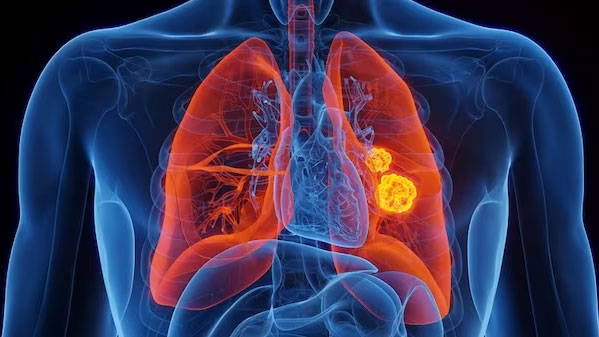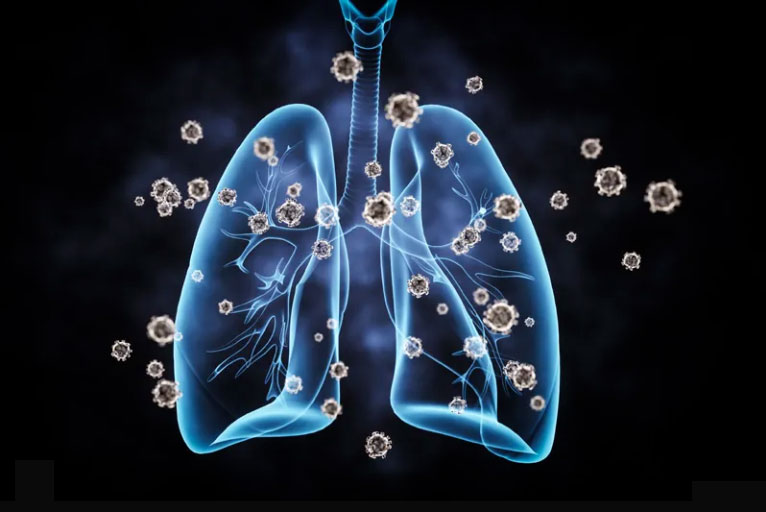The incidence and mortality of lung cancer still rank first among malignant tumors. Among them, Small Cell Lung Cancer (SCLC) is the most invasive subtype of lung cancer, accounting for about 15% of all lung cancer cases, with the characteristics of rapid progression, early metastasis, and poor prognosis. About 70% of patients are already in the extensive stage (i.e. advanced stage) when they are first diagnosed, and the 5-year survival rate is only 3%.
Faced with such a dangerous disease, how to effectively prevent and deal with it? Let you have a deep understanding of SCLC!

Small Cell Lung Cancer, the "king of invasion" in lung cancer
Lung cancer can be divided into non-small cell lung cancer (NSCLC) and Small Cell Lung Cancer (SCLC) according to different histopathological characteristics, of which NSCLC accounts for about 80%-85% of all lung cancers, and SCLC accounts for only about 15% of the total number of lung cancers.
SCLC is the most aggressive type of lung cancer, with small cancer cells and the characteristics of rapid proliferation and early metastasis. About 10%-20% of patients have brain metastases at the time of initial diagnosis, and up to 40%-50% of patients develop brain metastases during the course of the disease.
SCLC is divided into extensive stage (late stage) and limited stage (stage I-III). About 70% of SCLC patients are already in the extensive stage (i.e. late stage) when diagnosed, and only 3% of patients can still survive within five years after diagnosis. Limited stage SCLC in stages I-III accounts for about 30% of SCLC, and only 15%-30% of patients can survive more than 5 years after diagnosis.
◆ Immunotherapy, a new hope to break through the bottleneck of survival
For the treatment of SCLC, Professor Zhu Hui said that radical treatment, such as surgery, radiotherapy, or drug treatment such as chemotherapy, immunotherapy, etc., should be selected in combination with the staging and individual conditions recommended by the guidelines that are different from the patient.
Surgical treatment is generally suitable for early-stage (stage I–IIA) SCLC patients, which only account for 5% of the total number of SCLC.
Concurrent chemoradiotherapy is the standard treatment for limited-stage SCLC patients who are not suitable or unwilling to undergo surgery. Although patients respond well to treatment in the early stage, the recurrence rate is high and the progression is rapid.

"In the past, chemotherapy and radiotherapy were the main means. Although SCLC is sensitive to initial treatment, the vast majority of patients will progress within 6 months, and treatment options are limited after recurrence, with a median survival of only about 8-10 months." Professor Zhu Hui emphasized, "The emergence of immune checkpoint inhibitors has brought new hope to patients."
"The mechanism of action of immune checkpoint inhibitors (such as PD-1/PD-L1 inhibitors) is to block the inhibitory signaling pathway between tumor cells (expressing PD-L1) and T cells (expressing PD-1), allowing the suppressed T cells to restore activity and kill cancer cells." Immunotherapy has broken through the limitations of traditional regimens, bringing new hope to patients with both limited and extensive SCLC, and is gradually becoming a new standard for first-line treatment of SCLC.
◆ MDT diagnosis and treatment helps patients protect their hope of life
Whether it is extensive or limited stage SCLC, due to its high malignancy, complex diagnosis and treatment, its diagnosis and treatment often requires the participation of multiple departments such as oncology, radiotherapy, surgery, and even imaging and pathology. Formulating an overall treatment strategy and implementing standardized treatment according to the individual situation of the patient is crucial to improving survival benefits.

The multidisciplinary consultation (MDT) diagnosis and treatment model is suitable for SCLC patients, and SCLC patients are strongly recommended to enter MDT diagnosis and treatment.
Under the MDT model, multidisciplinary experts jointly analyze the patient's medical history, clinical manifestations, and imaging, pathology, molecular biology and other data to comprehensively evaluate the patient's condition, the diagnosis, staging, development trend and prognosis of the disease, and formulate an individualized overall treatment strategy for the patient, which can be adjusted in time.
MDT breaks the limitations of traditional single-discipline diagnosis and treatment, emphasizes starting from the overall patient, comprehensively considering all aspects of the disease, and promoting the transformation of the diagnosis and treatment concept from "disease-centered" to "people-centered". By integrating the advantages of various disciplines, patients can be provided with more comprehensive and personalized treatment strategies to maximize the efficacy.
◆ Stay away from "small lungs", early screening and early diagnosis of high-risk groups are the key
Although SCLC is "ferocious", the high-risk groups are very clear-smokers and those with a family history of lung cancer.
Among SCLC, smokers account for more than half, and smoking is a clear high-risk factor. The risk drops rapidly after quitting smoking, but it is still higher than that of never smokers, even 35 years after quitting smoking. Therefore, quitting smoking is a key measure to reduce the risk.
In addition, people with a family history are also at higher risk. Many patients have a family history. If a family member has lung cancer (especially SCLC), regular screening is strongly recommended.
Early diagnosis and screening, early diagnosis and early treatment are the core of improving the efficacy of lung cancer. Although low-dose spiral CT screening is far less effective for SCLC than NSCLC, it is still necessary to screen all high-risk groups based on evidence-based guidelines, because it can still find a certain number of early NSCLC and a very small number of early SCLC. Tumor marker detection can also provide a reference for screening.
Regarding the screening frequency, it is recommended to do a low-dose CT scan once a year. If a high-risk nodule is found, it is recommended to recheck it every three or six months. If the nodule is stable during the recheck, it can be restored to once a year.
Early diagnosis and treatment, especially early screening of high-risk groups, is crucial.

%20--%3e%3c!DOCTYPE%20svg%20PUBLIC%20'-//W3C//DTD%20SVG%201.1//EN'%20'http://www.w3.org/Graphics/SVG/1.1/DTD/svg11.dtd'%3e%3csvg%20version='1.1'%20id='图层_1'%20xmlns='http://www.w3.org/2000/svg'%20xmlns:xlink='http://www.w3.org/1999/xlink'%20x='0px'%20y='0px'%20width='256px'%20height='256px'%20viewBox='0%200%20256%20256'%20enable-background='new%200%200%20256%20256'%20xml:space='preserve'%3e%3cpath%20fill='%23FFFFFF'%20d='M194.597,24.009h35.292l-77.094,88.082l90.697,119.881h-71.021l-55.607-72.668L53.229,232.01H17.92%20l82.469-94.227L13.349,24.009h72.813l50.286,66.45l58.148-66.469V24.009z%20M182.217,210.889h19.566L75.538,44.014H54.583%20L182.217,210.889z'/%3e%3c/svg%3e)




